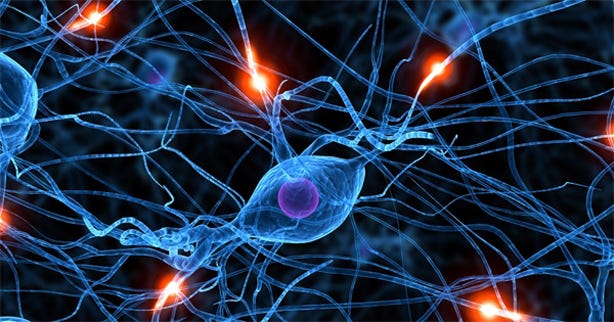Having lived in the design and media realm for as long as I can remember, that old adage has always rung true for me. But, as the technology revolution continues to reign, it's becoming apparent that the use of images can have an incredible impact on not only how well your content is received, but on those digesting what you've shown.
Within social media, attaching an image or video to a tweet can produce exceptional results. For a business, smart use of Instagram may be the spark to igniting your brand. The most successful sources of news either feature video highlights, or use images to break up the reading, stimulating the audience as they drive down a page. Even here at Traitify, our entire lifeblood comes from an image-based personality assessment.
And if not for the image at the top of this post, would you even have started reading this? It's clear that visuals are the quickest way to grab someone's attention, and keep hold of it, so it got me wondering — what exactly causes this?
Instant Stimulation
The most important part of why images are so attractive to us comes from the way our brain processes what we see. It's incredible the value our minds place on what we see, and the speed at which we can do it. It's estimated that 90% of the information entering our brain is visual, and that more neurons in our body are dedicated to vision than our other four senses combined.

Long before writing was created, imagery was the main form of communication for humans. On average we can see an image and gain meaning from it in under 100 milliseconds. Even more impressive than that, our mind can look at something complicated and unique, such as a human face, and not only identify the property, but access recognition of exactly who we're looking at in just over 300 milliseconds. Would flipping through Facebook and Twitter be as seemingly mindless of a process if you needed to remember who a name belonged to, rather than just seeing their profile picture, and without thought, identifying who they were?
While we still can process writing in a relative fashion, our mind treats individual words as "images", so the time it takes us to process the concepts of a single sentence is much longer that of a single images. It's also being noticed that humans are becoming disinterested with reading in general — 92% of Google users will only look at the first page of results. Children especially are engaging in visual and interactive mediums are a young age, quickly losing interest in traditional reading.

Another crucial factor when it comes to quickly engaging our minds is the attention span of modern individuals. As our previous post recently discussed, the average person only has an attention span of 8 seconds (less than that of a goldfish!), meaning we need to be constantly engaging them. While written text can still be effective if crafted in a smart and snappy fashion, or directed to the perfect audience, visuals dance with the brain instantly, generating a near instant connection.
Emotional Connection
So now that we understand how quickly our mind processes images, how is it that "a thousand words" can come from a single image? Isn't a written phrase able to more efficiently communicate exactly what is meant to be understood?
The most powerful way to activate our minds and engage our emotions is by telling a story. While reading text is a way to directly communicate someone else's story, images force us to create meaning from our own personal experiences. Images can be interpreted differently depending on the person viewing them, triggering different emotions and behaviors out of unique individuals.

For example, just last week was that fourteenth anniversary of the September 11th attacks on the United States. Across my own personal social media I saw many posts with the same photo of the Twin Towers as they were struck, yet saw a multitude of ways people reacted to that image. Some felt saddened by the loss, yet others felt proud, knowing how our country united in the following days and months. One friend expressed fear that it could happen again, and another wrote words of anger towards those that planned the attacks. We all react differently to images based on our own experiences, and that reaction can affect our behavior towards the image.
Visuals stir emotions. There is no quicker way to engage our thoughts and creativity than showing us something our mind can instantly connect, and leads us to stimulating other areas of our brain, producing a more profound and accurate understanding of what we're looking at.
While words can search for implied meaning with us, the way we react to an image is personal, and related only to us. It's why we've been able to find success at Traitify. What better way to measure personality than that?

Now of course both the speed and way people react to images isn't without it's faults. Outside of the lowered attention spans the world is facing, millennials in particular are showing rapid growth of FoMO — Fear of Missing Out — which Entrepreneur calls an "epidemic." More and more, those who fall into the classic 18–34 age range are facing anxiety and apprehension about not attending events or participating in shared experiences with their friends and peers. It's the reason we're all constantly accessing our phones, and is spurred on by the bombardment of images shown to us via social media.
That, however, is only one instance where the increased level of visual engagement has an adverse impact on society. For the most part visuals have created more innovators, more artists, and more informed individuals than we've ever seen before. There is no quicker way to gain understanding and insight that via imagery. A single image can engage a person in a deeper fashion than any line of text can, and that same image can be used to rally people together in incredibly powerful ways.
So, do I think that a "picture is worth a thousand words?" Nope. It's worth much more than that.





